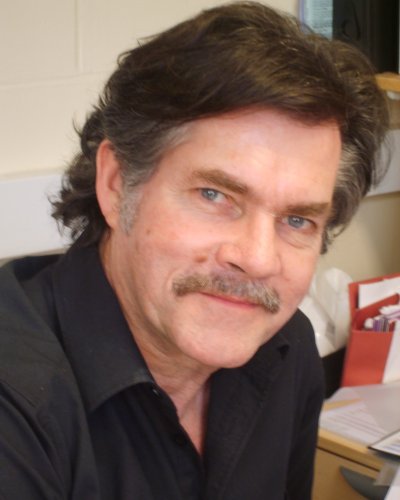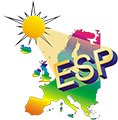
Bath, UK, October 2015
Dear Friends and Colleagues,
The European Society for Photobiology (ESP) is an international society and although founded and based in Europe, the membership extends worldwide, with substantial representation in Australasia, USA, Canada, South America, the Middle East and Africa. We seek to further expand knowledge of Photobiology through promotion of an increasingly diverse membership. The encouragement and facilitation of participation in society activities of students of Photobiology and young investigators has always been and continues to be an activity high on our agenda. As an important example, Fellowships are provided for scientists requiring support to attend our biennial Congress. In addition, Fellowships are provided for a range of activities of young scientists (http://www.photobiology.eu/education-and-training) and we provide places at our biennial multi-disciplinary Photobiology School at very low cost to attendees.
Photobiology encompasses the science and application of sunlight effects on living organisms, both animals and plants, and includes artificial sources of non-ionising radiation (ultraviolet, visible and infra-red). As such, basic and translational photobiological research has a vast societal impact including in the prevention, diagnosis and treatment of human disease; environmental safety; climate change; and agricultural developments. A great strength of the ESP is the “meeting house” it provides for multi-disciplinary scientists from backgrounds in biology, chemistry, physics and medicine, stimulating leading-edge developments including in nanotechnology, spectroscopy, dermatology, vision, oncology and plant biology and providing a modern and relevant approach to research, education and training.
ESP Congresses take place over 4 days and occur every 2 years, the most recent being held in Aveiro, Portugal (September 2015). The next will be held in Pisa, Italy in September 2017. The high profile Plenary and Keynote talks, and the wealth of parallel symposia, alongside the convivial social engagements, can be appreciated through the websites of the 2013, 2015 and 2017 (in preparation) conferences.
The high quality research of our Young Investigators is illustrated by the 2015 award to Alex Jones (Manchester, UK) who presented an outstanding talk in Aveiro on “The emerging field of B12 photobiology”. A total of 65 Fellowships were granted to assist the attendance of ESP members (http://www.photobiology.eu/education-and-training).
The ESP has an established Photobiology School, occurring on alternate years to the Congress. Founded in 2010, the ESP Photobiology School provides an excellent grounding in the basic principles of photobiology, photochemistry and photophysics, and also in their translation to a wide range of applications. Designed with PhD students in mind, the School also welcomes Masters’ students and others who wish to broaden their understanding of photobiology. Certificates are provided for attendance on the course, and also for the end of course examination for those opting to take this. The 4th School will be in Brixen/Bressanone, a charming town in Northern Italy, from the 20th-25th June 2016, and early application is advised for this well- subsidised course delivered by leading figures in Photobiology, as places are limited.
The ESP promotes scientific publication of original articles and perspectives (reviews) through the society-owned internationally leading peer-reviewed journal, Photochemical and Photobiological Sciences (http://pubs.rsc.org/en/journals/journalissues/pp#!recentarticles&adv). The Journal appears on a monthly basis and includes regular themed issues on a range of photobiological topics . In 2015, these have included a set of several perspectives on the United Nations Environmental Programme (UNEP) 2014 assessment, a part-themed issue on Photofunctional proteins, an issue on resistance mechanisms in photodynamic therapy (dedicated to Giulio Jori) and electronic collection issues are being prepared on retinal proteins and contributions from the recent International Congress of Photobiology in Cordoba, Argentina. Submissions to the journal have doubled over the last decade and continue to rise. We are also planning to enhance the book series (also published by RSC) and several books are already in process or planned. A new publications work group is being set up which will advise on our scientific publication activity to the ESP executive committee and ensure the active participation of our photobiological and photochemical community in these activities.
We bring to your attention that membership of the ESP is provided at an extremely low cost. In particular, we offer 2 years membership including the online issues of Photochemical and Photobiological Sciences for only €100 in total. This rate also entitles you to the reduced registration fee at the Congress. Fellowships and the Photobiology School attendance are only open to ESP members.
To join, please follow the link: http://www.photobiology.eu/membership-application.
The term 2015-17 will be an exciting one! Scientific excellence remains at the forefront, capturing the latest developments within our field and forging new collaborations. Means for fostering this include the leading-edge Keynote talks and inter-disciplinary translational science symposia in development for our next Congress. The charming venue of Pisa, famous for the tower but with many other attractions, is the site of the next (and 17th ) ESP Congress to be held from September 4th-7th, 2017. You are warmly invited to join us there so please put this date in your calendar. Details will appear shortly on the ESP web-site (http://www.photobiology.eu). Early industrial enquiries to sponsor activities may be directed to the chair of the local organising committee, Francesco Ghetti (francesco.ghetti@nano.cnr.it).
Our external profile will be further promoted through enhanced communications with international and national scientific bodies, governmental agencies and the public, alongside informative communications to our membership. A Communications Workgroup, is in place to continually improve the nature and reach of our communications, working closely with our membership workgroup. This group also ensures that our web pages are up to date and vibrant and is responsible for the sustained publication of our stimulating newsletter, Eye-on-ESP.
Do contact me if you wish to provide information or views on developments in Photobiology that you feel would benefit or interest the ESP.
Thank you very much for your interest and support
Rex M. Tyrrell
ESP President
prsrmt@bath.ac.uk
